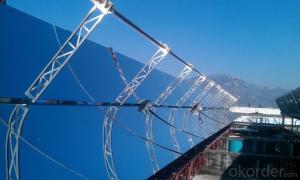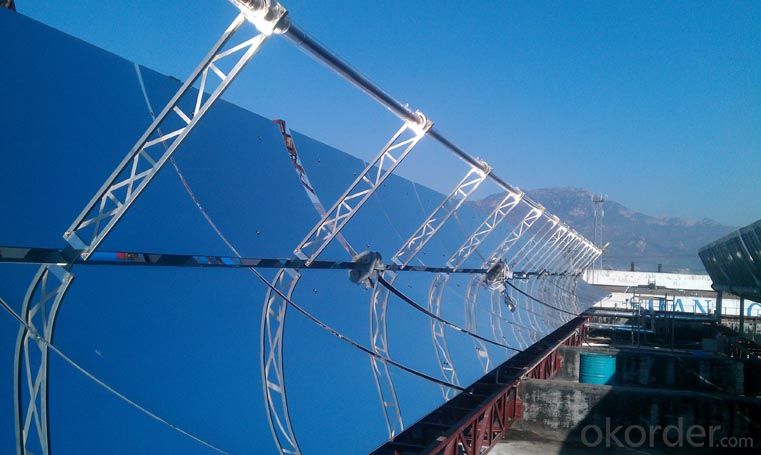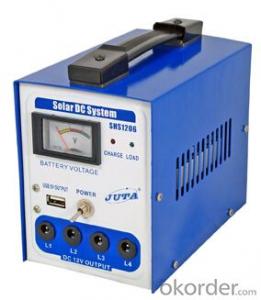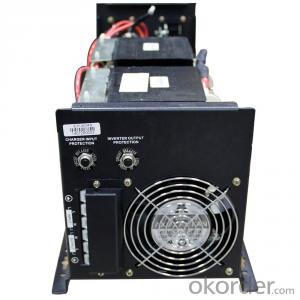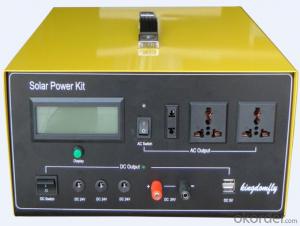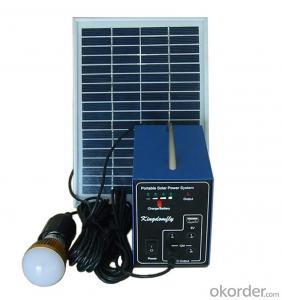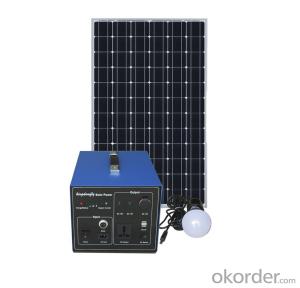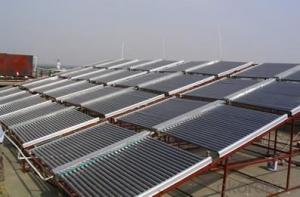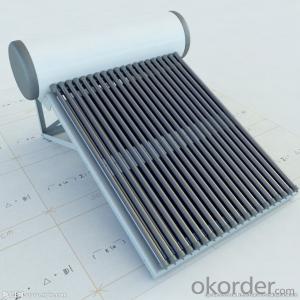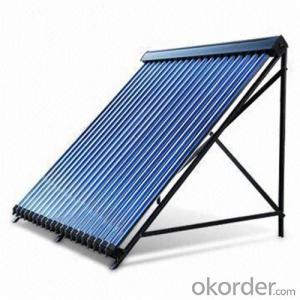Solar Energy Systems Woodbury - Pressurized Solar Collector with Heat Pump
- Loading Port:
- Shanghai
- Payment Terms:
- TT or LC
- Min Order Qty:
- 100 m²
- Supply Capability:
- 100000 m²/month
OKorder Service Pledge
OKorder Financial Service
You Might Also Like
Descritpion:
CNBM Solar is a world-leading and Vertical integrated manufacturer of high-performance with Silicon,
Wafer, Cells, Modules, which convert sunlight into electricity for residential, commercial, and utility-scale
power generation.
The capacity of CNBMSolar is reach to 1GW, and make sure each year our shipment capacity is more
Than 700-800MWs, at the same time, we have set up the largest solar power station with our partner
in Ukraine.
CNBM is a Quality + Service oriented company with“Excellence at Each Step” approach, composed of
the finest components from TUV and IEC-certified partners around the world, CNBM modules consistently
undergo a variety of trials at the company’s Test & Development Centre, ensuring peak performance
capabilities. The company is committed to develop and provide the world with clean and renewable energy
to ease the energy shortages as well as human kind’s impact on the environment.
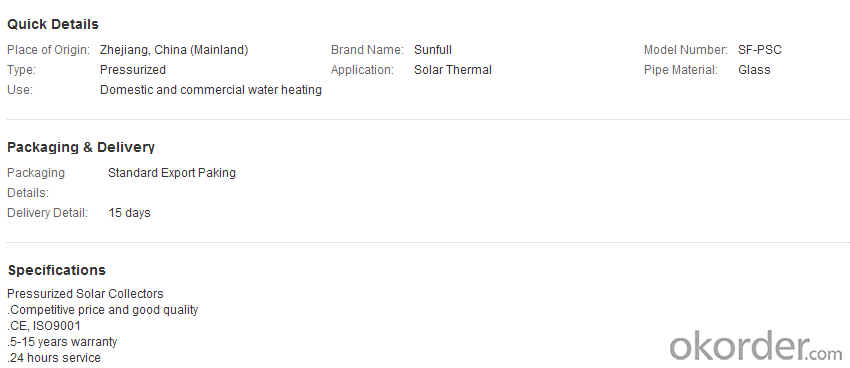

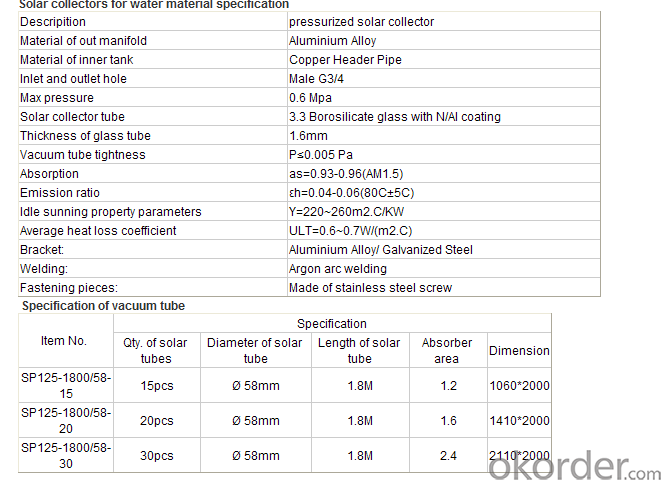
FAQ:What's CNBM's strength?
CNBM Group is short for China National Building Materials Group Corporation, which is established in 1984 with approval from the State Council. It is a China state owned company ,one of Global Fortune 500 .SO,CNBM can get more support from government .
- Q: Can solar energy systems be used in remote areas?
- Yes, solar energy systems can be used in remote areas. They are particularly well-suited for such locations because they do not require a connection to a centralized power grid. Solar panels can be installed in remote areas to harness sunlight and generate electricity, providing a sustainable and reliable source of energy. This makes solar energy systems an ideal solution for powering remote communities, scientific research stations, or off-grid projects in isolated regions.
- Q: Can solar energy systems be used in areas with limited access to solar connectors and cables?
- Yes, solar energy systems can be used in areas with limited access to solar connectors and cables. Off-grid solar systems, such as standalone solar panels combined with battery storage, can be deployed in remote or inaccessible areas without the need for extensive infrastructure. These systems are self-sufficient and can generate and store electricity for use even without a direct connection to the grid. They are an excellent solution for providing renewable energy in areas where traditional electrical infrastructure is limited or non-existent.
- Q: What are the different types of solar energy systems?
- The different types of solar energy systems include solar photovoltaic (PV) systems, solar thermal systems, concentrated solar power (CSP) systems, and hybrid solar systems.
- Q: What is the role of solar energy systems in reducing energy waste?
- Solar energy systems play a crucial role in reducing energy waste by providing a sustainable and renewable source of power. These systems harness the energy from the sun and convert it into electricity or heat, which can be used to power homes, businesses, and even entire communities. One of the main ways solar energy systems help reduce energy waste is by offsetting the need for traditional fossil fuel-based power generation. Fossil fuels, such as coal and natural gas, are finite resources that not only contribute to environmental pollution but also produce a significant amount of waste in the form of greenhouse gas emissions. By utilizing solar energy systems, we can tap into an abundant and clean energy source, thereby reducing our reliance on fossil fuels and minimizing energy waste associated with their extraction, transport, and combustion. Additionally, solar energy systems can help reduce energy waste by improving overall energy efficiency. Many solar technologies, such as photovoltaic panels and solar water heaters, are designed to directly convert sunlight into usable energy without any intermediate steps or wasteful processes. This direct conversion process eliminates the need for energy conversion losses, which are typically encountered in traditional energy generation methods. Furthermore, solar energy systems can be integrated with energy storage solutions, such as batteries, allowing excess energy produced during the day to be stored and used during periods of low sunlight, further minimizing energy waste. Moreover, solar energy systems also encourage a shift towards decentralized and distributed energy generation, reducing transmission and distribution losses. Traditional power grids often suffer from significant energy losses during long-distance transmission, with some estimates suggesting losses of up to 8% or more. By installing solar panels on rooftops or in local communities, electricity can be generated close to the point of consumption, minimizing these transmission losses and reducing overall energy waste. In summary, solar energy systems play a vital role in reducing energy waste by replacing fossil fuel-based power generation, improving energy efficiency, minimizing transmission losses, and promoting decentralized energy generation. By harnessing the power of the sun, we can transition towards a more sustainable and environmentally friendly energy future, while also reducing the overall waste associated with conventional energy sources.
- Q: Can solar energy systems be used in disaster-prone areas?
- Yes, solar energy systems can be used in disaster-prone areas. In fact, they can be particularly beneficial in such areas. Traditional power grids are often fragile and vulnerable to damage during natural disasters such as hurricanes, earthquakes, or floods. This can leave the affected areas without electricity for extended periods, hindering relief and recovery efforts. Solar energy systems, on the other hand, are decentralized and can operate independently of the grid. These systems consist of solar panels that convert sunlight into electricity, which can be stored in batteries for use during times of power outage. This allows critical facilities, such as hospitals, emergency response centers, and shelters, to continue functioning even when the grid is down. Solar energy systems can provide a reliable source of power for lighting, communication, refrigeration, and medical equipment, greatly enhancing the resilience and effectiveness of disaster response. Furthermore, solar energy systems can also be used to power water pumps, providing communities with access to clean water during times of crisis. This is particularly important in disaster-prone areas, where access to safe drinking water can be severely compromised. Solar-powered pumps can extract water from wells, rivers, or other sources, ensuring a constant supply for drinking, sanitation, and hygiene purposes. Additionally, solar energy systems can contribute to long-term recovery efforts in disaster-prone areas. By reducing dependence on fossil fuels and traditional power grids, they can help build more sustainable and resilient communities. Solar panels can be installed on rooftops or in open spaces, making use of abundant sunlight resources. This not only reduces greenhouse gas emissions and mitigates climate change but also provides a reliable and affordable source of energy for homes, businesses, and public infrastructure. In conclusion, solar energy systems can be effectively used in disaster-prone areas to provide reliable power, support critical services, and contribute to long-term resilience. By harnessing the power of the sun, these systems offer a sustainable and decentralized solution to energy needs, ensuring that communities can withstand and recover from natural disasters more effectively.
- Q: Are there any risks of electrical short circuits with solar energy systems?
- Yes, there are risks of electrical short circuits with solar energy systems. Just like any other electrical system, solar energy systems can be susceptible to short circuits. A short circuit occurs when there is an unintended path of low resistance that allows a large amount of current to flow. This can happen due to various reasons such as faulty wiring, damaged components, or improper installation. Short circuits can result in overheating, electrical fires, or damage to the system. The high current flow generated by a short circuit can cause wires to melt, insulation to burn, and can even damage the solar panels themselves. In extreme cases, short circuits can lead to explosions or other serious safety hazards. To mitigate the risks of short circuits, it is crucial to ensure proper installation by qualified professionals who follow safety guidelines and adhere to local electrical codes. Regular maintenance and inspection of the system are also important to identify and address any potential issues. It is recommended to have a circuit breaker or fuse installed within the system to automatically disconnect the circuit in case of a short circuit. Additionally, the use of high-quality components and wiring that are specifically designed for solar energy systems can help minimize the risks of short circuits. It is also important to follow manufacturer's instructions and guidelines for system maintenance and operation. Overall, while the risks of electrical short circuits with solar energy systems exist, they can be effectively managed and minimized through proper installation, regular maintenance, and adherence to safety guidelines.
- Q: How do solar energy systems impact the reduction of fossil fuel consumption?
- The reduction of fossil fuel consumption is greatly influenced by solar energy systems. One of the key benefits of solar energy is its utilization of the sun's power, which is a renewable energy source. This implies that solar energy systems do not rely on the burning of fossil fuels like coal or natural gas to generate electricity. By adopting solar energy, we can decrease our dependence on fossil fuels for electricity generation, thereby reducing our carbon footprint and addressing the negative environmental consequences associated with fossil fuel consumption. Additionally, solar energy systems contribute to the reduction of fossil fuel consumption through net metering. Net metering allows individuals or businesses with solar panels to sell any excess electricity generated back to the grid. This means that when solar energy production is high and exceeds the amount being used, the surplus energy is fed into the grid. Consequently, the need for fossil fuel-based power plants to produce electricity to meet demand decreases, resulting in an overall reduction in fossil fuel consumption. Moreover, the adoption of solar energy systems can lead to a decrease in the demand for fossil fuel-based electricity, which can subsequently drive down electricity prices. This price reduction enhances the economic competitiveness of renewable energy, encouraging greater adoption of solar energy systems and further decreasing the demand for fossil fuels. In conclusion, solar energy systems play a crucial role in reducing fossil fuel consumption. By harnessing the sun's energy, solar power systems eliminate the necessity of burning fossil fuels for electricity generation. Through net metering and the potential for price reductions, solar energy systems contribute to the overall reduction of fossil fuel consumption, promoting a cleaner and more sustainable energy future.
- Q: Can solar energy systems be used in areas with high seismic activity?
- Yes, solar energy systems can be used in areas with high seismic activity. However, it is essential to design and engineer these systems to withstand seismic forces. This can be achieved by utilizing specialized mounting structures, such as ballasted or anchored systems, and ensuring proper installation and maintenance. Additionally, advanced technologies like micro-inverters or power optimizers can enhance the system's resilience by minimizing the impact of potential module shading or damage caused by seismic events. Overall, with proper planning and precautions, solar energy systems can be successfully implemented in areas prone to high seismic activity.
- Q: What is the role of solar water pumps in solar energy systems?
- The role of solar water pumps in solar energy systems is to utilize solar power to pump water for various applications such as irrigation, livestock watering, and domestic use. These pumps are designed to operate efficiently using solar energy, reducing dependence on grid electricity and minimizing both operational costs and environmental impact. Solar water pumps play a vital role in harnessing the renewable energy potential of the sun and providing sustainable water solutions in off-grid and remote areas.
- Q: Can solar energy systems be used for commercial or industrial purposes?
- Yes, solar energy systems can definitely be used for commercial or industrial purposes. Many businesses and industries are increasingly adopting solar power as a sustainable and cost-effective alternative to traditional energy sources. Solar panels can be installed on rooftops, parking lots, or open spaces to generate electricity for powering offices, factories, warehouses, and other commercial or industrial facilities. Additionally, solar energy systems can help businesses reduce their carbon footprint and save on energy costs in the long run.
Send your message to us
Solar Energy Systems Woodbury - Pressurized Solar Collector with Heat Pump
- Loading Port:
- Shanghai
- Payment Terms:
- TT or LC
- Min Order Qty:
- 100 m²
- Supply Capability:
- 100000 m²/month
OKorder Service Pledge
OKorder Financial Service
Similar products
Hot products
Hot Searches
Related keywords
